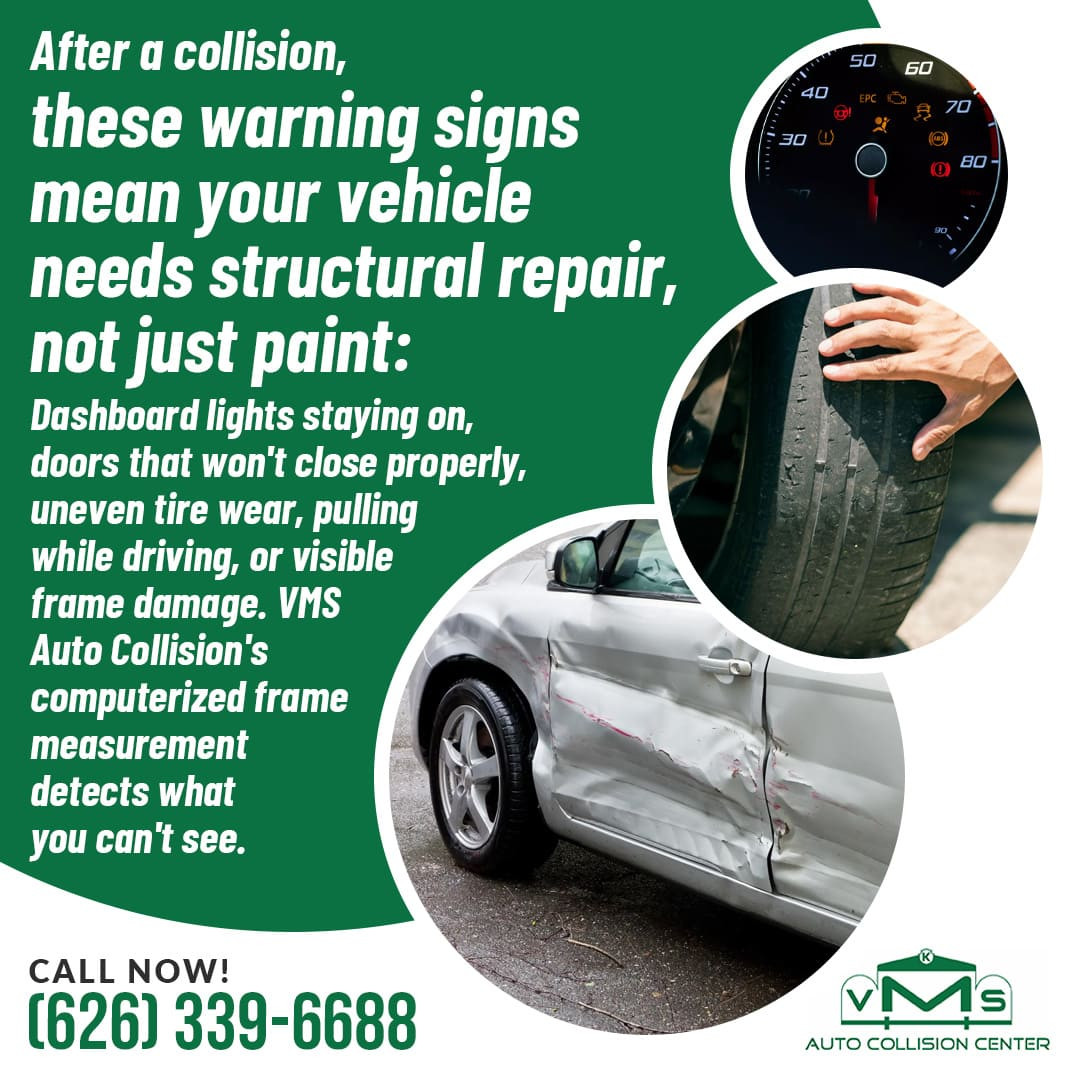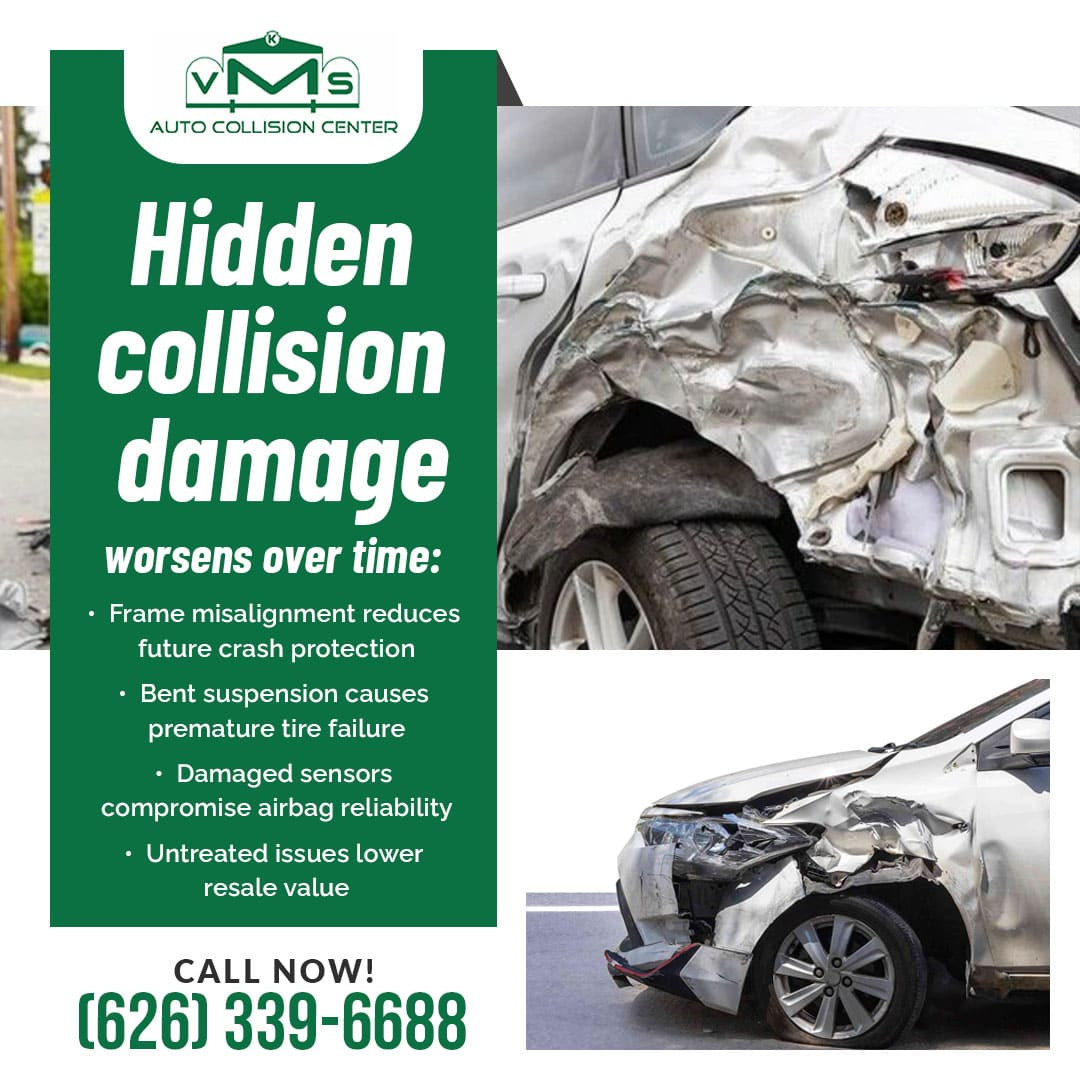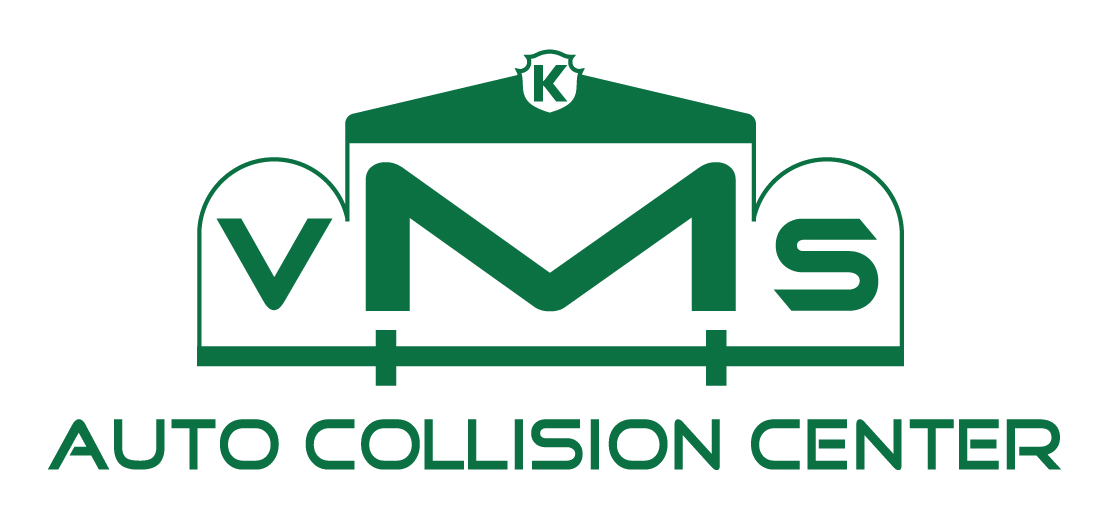Covina, CA - Many drivers underestimate the seriousness of vehicle damage after a collision. What appears as minor paint or panel harm can conceal deeper structural issues that affect frame alignment, suspension geometry, and onboard safety systems. Hidden damage of this kind compromises crash protection, handling stability, and electronic sensor accuracy, creating long-term risks if not properly addressed.
VMS Auto Collision Center, a family-owned auto collision shop in Covina with 35 years of experience, specializes in identifying and repairing structural damage that extends beyond surface-level appearance. Using computerized frame measurement and manufacturer-grade diagnostic tools, the shop restores vehicles to original factory specifications and helps drivers throughout the San Gabriel Valley maintain both safety and value after an accident.
How Cosmetic Repairs Differ from Structural Damage
Modern vehicles are built using unibody construction, where the body and frame function as a single structural unit. While this improves crash safety and fuel efficiency, it also means even low-speed impacts can affect the entire structural system, including electronic components and suspension geometry.
Unlike dents or paint damage, structural misalignment and electronic system failures can remain undetected without specialized equipment. These issues often worsen over time, affecting crash performance, handling, and tire wear.
Five Signs Your Vehicle Needs More Than Cosmetic Repair
VMS Auto Collision Center has identified the most frequent signs indicating structural or internal collision damage. These warning indicators should not be ignored.
Dashboard Warning Lights That Stay On
Persistent dashboard lights following an accident often signal problems with airbags, ABS, stability control, or other safety systems. Damage to sensors, control modules, or wiring inside the vehicle structure can trigger these alerts. Without proper diagnosis and repair, these safety systems may not function during a future emergency.
Doors, Trunk, or Hood That Won’t Close Properly
When body panels are misaligned or difficult to close, it often means that the structural mounting points have shifted. These panels attach to frame-integrated areas like pillars and rails. Misalignment can also lead to water leaks and reduce the effectiveness of crumple zones and door latches during side-impact collisions.
Uneven or Accelerated Tire Wear
Tire wear patterns often reflect hidden damage to suspension geometry. If a vehicle experiences camber or toe misalignment after a collision, it may be the result of bent arms, shifted mounts, or damaged subframes. These issues affect handling, tire life, and crash response performance.
Changes in Vehicle Handling or Pulling
A vehicle that drifts, pulls, or feels unstable after an accident may have sustained frame or suspension misalignment. Damage to mounting points or steering components can cause vibrations, an off-center steering wheel, or unpredictable cornering. These changes degrade the performance of electronic stability systems and driver-assist features.
Visible Frame Damage or Uneven Body Panels
Buckled frame rails, uneven gaps between panels, or popped seams are clear signs that the vehicle’s structural integrity has been compromised. Damaged crumple zones and frame members reduce protection in future collisions. These symptoms require professional correction using precise measurement and realignment systems.
Why Structural Repairs Should Not Be Delayed
Hidden damage may lead to premature suspension failure, inconsistent sensor performance, and reduced airbag reliability. Over time, untreated issues grow more severe, requiring more expensive auto collision repairs and exposing drivers to safety hazards.
Improper or incomplete repairs also affect insurance claims and resale value. Modern vehicles record accident and repair data in electronic logs and vehicle history reports. Buyers and insurers both look for documentation of certified structural repair work.
VMS Auto Collision’s Diagnostic and Repair Capabilities
VMS Auto Collision Center in Covina uses computerized frame measuring systems, manufacturer-grade scan tools, and precision diagnostic procedures to identify and repair collision-related structural damage. Each vehicle is scanned before and after repair to verify system integrity.
Technicians follow OEM procedures, using original parts and structural materials appropriate for high-strength steel or aluminum body systems. The shop holds I-CAR Gold Class certification, reflecting up-to-date training across all repair disciplines.
Structural Damage Requires a Certified Repair Facility
VMS Auto Collision Center’s ability to detect and repair structural damage sets it apart from basic body shops. Their facility serves Covina, West Covina, Azusa, and surrounding areas with expert collision repair backed by a Limited Lifetime Warranty.
Customers benefit from a streamlined process that includes insurance coordination, sensor recalibration, frame straightening, and full-body alignment, all performed under one roof by qualified technicians.
Schedule a Professional Collision Assessment in Covina
If your vehicle has been in an accident and is showing signs of hidden damage, it may require more than surface repairs. VMS Auto Collision Center provides accurate structural assessments and repairs that return your vehicle to manufacturer standards. Call (626) 339-6688 or email [email protected] to schedule an automotive collision evaluation or to learn more about post-accident safety inspections and advanced repair services.





